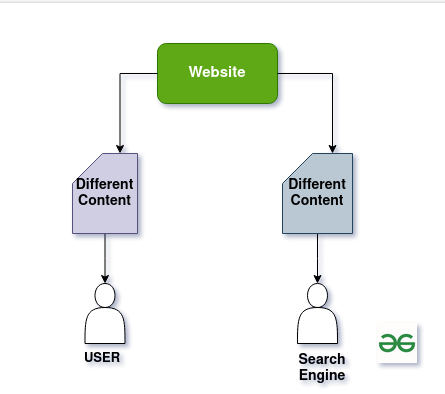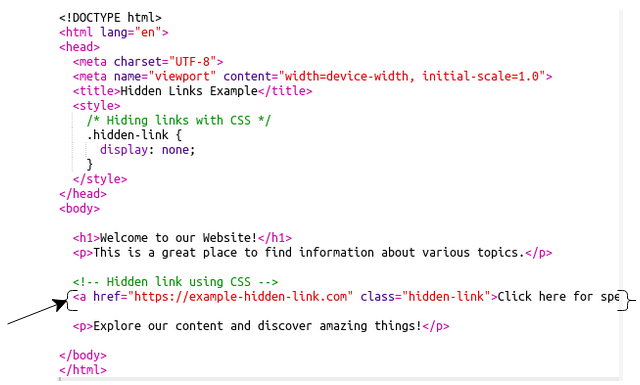Black hat SEO refers to unethical and manipulative practices used to deceive search engines and artificially improve a website’s search engine rankings. These techniques violate search engine guidelines and are aimed at exploiting weaknesses in algorithms to achieve quick and often short-term gains. While black hat SEO tactics may lead to rapid improvements in rankings, they come with significant risks, including potential penalties, loss of credibility, and long-term damage to a website’s online presence.

What Is Black Hat SEO
Black hat SEO refers to the use of aggressive and deceptive techniques to manipulate search engine rankings in ways that violate search engine guidelines. Unlike white hat SEO, which focuses on ethical and sustainable strategies, black hat methods often prioritize quick but risky gains. These tactics aim to exploit vulnerabilities in search engine algorithms, but they come with significant drawbacks, including the potential for penalties, a damaged online reputation, and long-term harm to a website’s visibility. In essence, black hat SEO involves strategies that prioritize search engine algorithms over user experience and can lead to negative consequences for websites engaging in such practices
Black Hat SEO Techniques
Black Hat SEO is a practice followed to get a higher ranking of your site in SERPs by not following the search engine guidelines and who expects a quick return on their site, rather than a long-term investment prefers to use Black Hat SEO. Before discussing the effect and outcomes of the Black Hat SEO, let us know about the major Black Hat SEO techniques:
1. Keyword Stuffing:
Keyword stuffing is the practice of embedding your content with unnecessary keywords just to make the site ranking higher on SERPs. However, the page will rank for those irrelevant keywords, it will be quite annoying for the users.

Keyword stuffing
In this example, the term “shoes” is excessively repeated, making the content unnatural and difficult to read. It’s essential to create content that provides value to users and incorporates keywords organically rather than forcefully stuffing them in. Search engines prioritize high-quality, relevant content that enhances the user experience
2. Doorway Pages:
These are those unwanted pages which act a mediator between the actual content and the audience. These are created to rank highly for specific keywords which has nothing to do with the users.

Doorway pages
It involves the practice of showing different content to users and search engines. For example, you search for a keyword “mathematics” and visit the related website after search, and it redirects to you at completely different content.

Cloaking in SEO
4. Content Automation:
It refers to the process of generating content without involving humans i.e., with the use of machines. The goal behind is to create the content which is more compatible with the search engine and not focusing on the user’s need.

Content Automation
5. Hidden Texts/Links:
These are the deceptive forms of links that are almost invisible to the users. The web pages having these hidden links embedded on it looks similar to the normal pages till then these hidden links are not assessed. It can be done by following ways:
- Using same text color as of the background
- Resizing the font size Zero
- Hiding behind the image
- Placing the link on small characters like – comma, colon, etc.

HTML code for hidden links
In this example, the link with the text “Click here for special offers!” is hidden from users using CSS (display: none;). While users won’t see the link on the webpage, search engine crawlers can still detect it. This technique is deceptive and can lead to negative consequences for a website’s search engine ranking. It’s important to use ethical SEO practices and ensure that all links are visible and relevant to users.
6. Duplicate Content:
Duplicate content refers to identical or substantially similar content that appears in more than one place, either within the same website or across different websites. Search engines aim to provide diverse and relevant results to users, so having duplicate content can lead to confusion and negatively impact a site’s search engine rankings.

Duplicate Content Within a website
In this example, the content under the “Featured Products” section is duplicated. The presence of identical or very similar content on different pages of the same website can confuse search engines and make it challenging to determine which page should be prioritized in search results. It’s important to create unique and valuable content for each page to improve search engine visibility and provide a better user experience
7. Sneaky Redirects:
“Sneaky redirects” refer to a deceptive practice where a website redirects users to a different page than the one they initially clicked on, without their knowledge or consent. This technique is often used to manipulate search engine rankings or to drive traffic to a page different from what users expect. Sneaky redirects are against search engine guidelines and can result in penalties for the website involved.

Sneaky Redirects
In this example, when a user clicks the button, they are redirected to a different website (https://deceptive-website.com) without any clear indication or explanation. Users expect to be taken to a relevant page based on the button’s label, but the actual destination is deceptive
8. Paid Links:
Yes, Paid Links are also falling under the Black Hat SEO category as if you are trying to enhance your domain authority by selling links, Google will de-index your site. There are many other Black Hat SEO techniques as well which works against the guidelines of Google. So, the point is if these techniques do not follow the search engine guidelines, then why are they being used?

Paid links
Perhaps, the reason is as it provides some short-term success. But you keep it remember that Google is becoming very strict with its policies and to violate these guidelines by doing Black Hat SEO can get your site penalized or the site could be de-indexed permanently. Some of the SEO practices you should do to avoid Black Hat SEO are listed below:
- Always make the user experience your priority while doing SEO
- Do not try to trick the search engine by cloaking, doorway pages, etc.
- Provide original content and avoid redundancy
- Stay up to date with the Search Engine Guidelines
Why Avoid Black Hat SEO
Some of the major Reasons why to avoid black hat SEO are as follows:
- Search Engine Penalties: Search engines actively penalize websites that engage in black hat SEO practices. Penalties can range from lowered rankings to complete removal from search engine results. This can have a severe impact on a website’s visibility and traffic.

search engine penalties
- Reputation Damage: Using black hat techniques can harm a website’s reputation. Visitors may perceive such practices as deceptive, leading to a loss of trust. A damaged online reputation can be challenging to recover, affecting user trust and loyalty.
- Short-Term Gains, Long-Term Losses: While black hat SEO may provide quick results, these gains are often short-lived. Search engines continually update their algorithms to detect and penalize unethical practices, leading to long-term losses and potential exclusion from search results.

Gains using different techniques
- User Experience: Black hat techniques typically prioritize search engines over user experience. This can result in poor-quality content, misleading information, and a frustrating experience for website visitors. Prioritizing user experience is crucial for building a loyal audience.
- Risk of Being Banned: Engaging in black hat SEO increases the risk of being banned or deindexed by search engines. Once banned, it can be challenging to regain visibility in search results, and the process of recovery is often time-consuming and uncertain.
- Legal Consequences: Some black hat SEO practices, such as content scraping or copyright infringement, can lead to legal consequences. Violating intellectual property rights or engaging in fraudulent activities may result in legal action against the website owner.
- Competitive Disadvantage: Websites using black hat techniques may gain a temporary advantage, but in the long run, ethical and sustainable practices provide a more stable foundation for success. Competitors who focus on white hat SEO are likely to build lasting credibility and trust with both users and search engines.
- Ethical Considerations: Engaging in black hat SEO goes against ethical standards and industry best practices. Operating with integrity and transparency not only benefits the website but also contributes to the overall trustworthiness of the online ecosystem
How To Report Black Hat SEO On Google
Reporting black hat SEO to Google is a responsible action to help maintain the integrity of search engine results. If you come across a website or suspect someone is engaging in black hat SEO practices, you can report it to Google through the following steps:
Google Webmaster Guidelines provide a set of recommendations and best practices for website owners and developers to ensure that their sites are optimized for search engines and provide a positive user experience. Adhering to these guidelines can help improve a website’s visibility in Google’s search results and maintain a good standing with the search engine.

Webmaster guidelines
Step 2. Make a list of websites using Black hat
Whenever you find a domain or web page you suspecting using black hat SEO, Copy the URL of that webpage or group of webpages and proceed to step 3.
Step 3. Google’s Spam Report Form:
Use Google’s Spam Report form to report websites or pages engaging in spammy or manipulative activities. Go to Googles for developer then go to report page.

Google Form Page
Step 4. Include Details:
Provide as much detail as possible about the black hat SEO activities you’ve observed. Include the URLs of the specific pages involved, describe the suspicious behavior, and explain why you believe it is a violation of Google’s guidelines.

Detail Page

Enter Details on This page
Step 5. Follow Up:
After submitting the report, monitor the website in question. Google may take action, but it’s essential to remember that the process may take some time. You can check the status of your report in Google Search Console under the Manual Actions section.
Conclusion
Black hat SEO tactics may offer short-term gains, but the risks far outweigh the benefits. Violating search engine guidelines through deceptive practices can lead to severe penalties, damage to online reputation, and even legal consequences. Prioritizing ethical, white hat SEO strategies is not only a compliance matter but a strategic choice for sustained success, user trust, and long-term credibility in the evolving digital landscape
Share your thoughts in the comments
Please Login to comment...